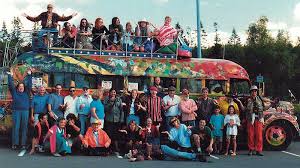I used to think my parents generation was clueless when it comes to social platforms and online communities.
However, my my father recently enlightened me. He provided a history lesson of sorts, the subject matter of which is basically a road map for modern social platforms or social architectures. It also got me reading everything I could about folks like Stewart Brand (pictured above).
My father a hippie in his younger years and so swayed by the ideas of 60’s ‘counterculture’ that he packed up his bags and hitchhiked to the epicenter of counterculture activity; San Francisco.
Stewart Brand And The Whole Earth Catalogue
While I had always assumed the hippie generation was simply out smoking dope and tossing Frisbees, in fact much of the 1960’s movement was rooted in the same concepts synonymous with today’s social platforms: networks, community building, and innovative technologies (gasp!).
Specifically my father mentioned the Whole Earth Catalog a publication he likened to a Google; an early search engine (of sorts) designed to help “discover inspiration and shape one’s own customized environment.”
In doing some research, I’m not the first to see the overlaps between online social platforms and the 1960’s: other notables have made the same connections.
The Whole Earth Catalog was founded by Stewart Brand — not coincidentally also the creator of the first online community called Whole Earth ‘Lectronic Link (or The WELL).
What’s more, Stewart’s partner-in-crime is author Kevin Kelly, the founding editor of Wired Magazine, famous futurist and author of 1000 True Fans.
And just like now, these innovations all happened in and around San Francisco by folks who were considered outsiders, operating on the fringes. Facebook was started by college students in Boston, MA.
As these social and technological philosophies spread, events like Woodstock attracted 500,000+ and came to inspire a nation of young people tinkering to design a better culture: one that promoted open communication in the face of oppressive politics.
Sound familiar?
Counterculture And Outsiders Lead Us To Innovation
Listen to this classic 1960’s rhetoric:
“Today, working hard is about taking apparent risk. It’s hard work to tell your boss that he’s being intellectually and emotionally lazy. As the economy plods along, many of us are choosing to take the easy way out. We’re going to work for the Man, letting him do the hard work while we work the long hours [we must take risks] Not a crazy risk like betting the entire company on an untested product. No, an apparent risk: something that the competition believe is unsafe but that you realize is far more conservative than sticking with the status quo.”
Just kidding! What you just read was written yesterday on a blog by Seth Godin!
When History Repeats
What is interesting is that while many of these same concepts around connecting people and “finding your tribe” existed in the 1960’s, we lacked the technology and business models to build true platforms.
However here in 2007, thanks to the internet and social architecture, we can act on the the movements that Stewart Brand and company pioneered.
It’s also interesting to see what Steward Brand is doing now. He lives on a Tugboat in Sausalito, surrounded by a hand-picked crop of innovative geniuses (“remarkable people“) at the Global Business Network. GBN is a sort of modern day Galt’s Gulch.
He is not yet done leaving his impact on culture. Via the Long Now Foundation, Brand and some other merry pranksters are working on an audacious goal: “to creatively foster responsibility [in how we think about] next 10,000 years.”
It was a great history lesson from my Dad!



